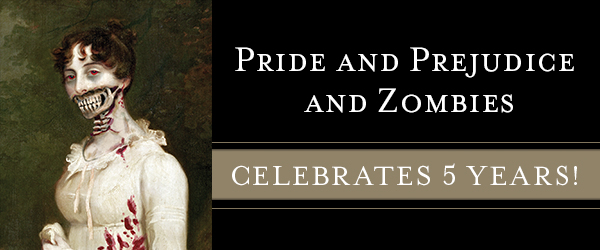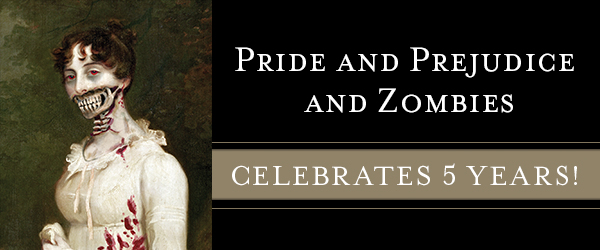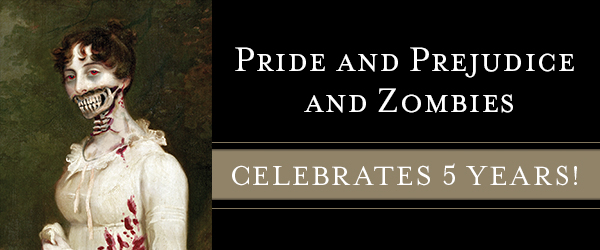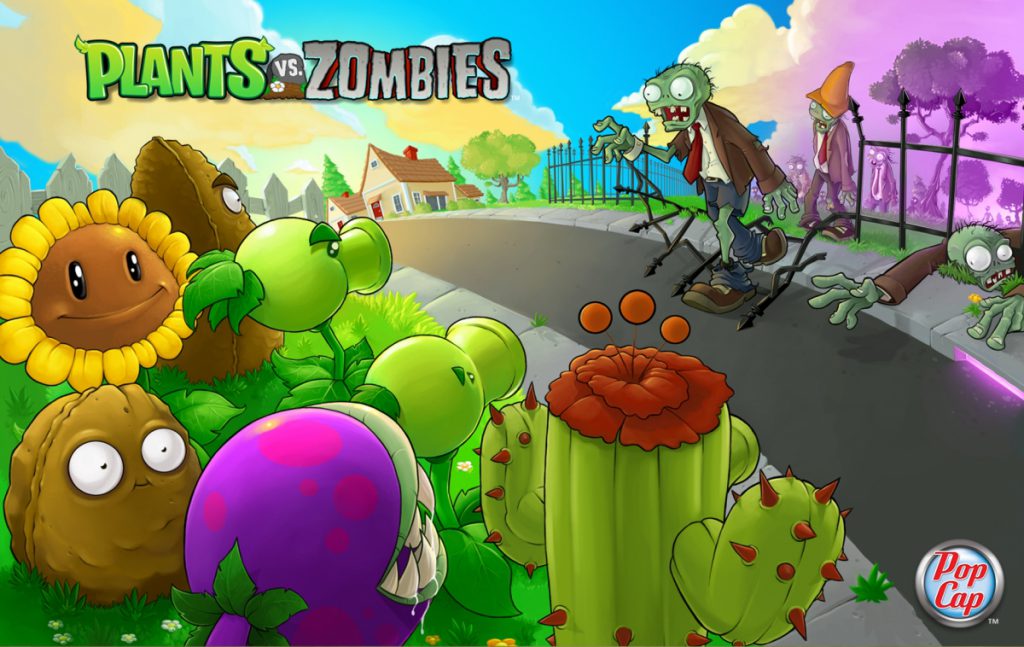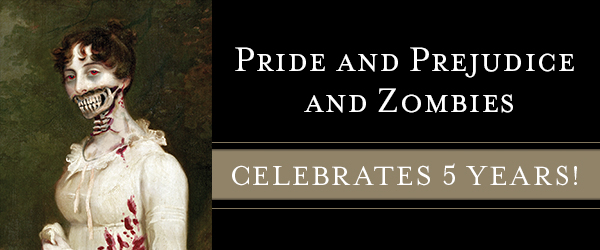Pride & Prejudice & Zombies: Part 3 of 3
[Note: Be sure to read the first part in this series, here!]
The “Quirk Classics” line continued with Android Karenina (June 2010) and The Meowmorphosis (May 2011), but it was the success of Steve Hockensmith’s Pride & Prejudice & Zombies expanded universe stories that cemented the publisher’s reputation for clever and unique fiction. While they continued to produce plenty of off-beat non-fiction, editor Jason Rekulak realized that as long as they had a captive audience interested in original fiction, they should run with it. Besides, they didn’t want to be known as just the Pride & Prejudice & Zombies guys (even though the book continues to be the most well-loved of the literary mashup boom).
Quirk pursued the zombie front with 2009’s Night of the Living Trekkies by Kevin David Anderson and Sam Stall, which continued the humorous pop culture-riffing on a zombie attack. This original prose story swapped out Regency England for a comic book convention, replacing aristocratic mannerisms with, well, Trekkies.
In 2011, they released Miss Peregrine’s Home for Peculiar Children by Ransom Riggs. Like Grahame-Smith and Winters before him, Riggs had previously worked on one of Quirk’s non-fiction guides, The Sherlock Holmes Handbook. He had originally pitched Miss Peregrine’s to Quirk as a children’s picture book of bizarre photographs that he had collected, but Rekulak convinced Riggs to craft a narrative out of the photographs instead.
)
Rekulak’s suggestion, and his general commitment to original prose fiction, paid off quite well for the publisher. Miss Peregrine’s Home for Peculiar Children spent forty-five weeks at #1 on The New York Times’ Children’s Chapter Book List, and kept hanging around the top 10 bestsellers for another eighteen weeks after that. The movie rights to the book were sold to 20th Century Fox, and the sequel, Hollow City, was released in January 2014.
Fiction fans clearly had a penchant for unconventional stories tinged with elements of horror or macabre. While the literary mashup craze had died down, Rekulak figured that there was something else they could do in a similar vein without beating an undead horse, so to speak. So the company expanded their children’s offerings from strictly non-fiction with the launch of the Lovecraft Middle School series, middle-grade adventure stories with wonderful shape-shifting lenticular covers about a haunted middle school with a monstrous faculty. The first book in the series, Professor Gargoyle by Charles Gilman (aka “Totally Not Jason Rekulak”), was released in 2012, and was followed by The Slither Sisters, Teacher’s Pest, and Substitute Creature.
#
But Quirk did not ignore the contributions made by “Quirk Classics” writers Steve Hockensmith and Ben H. Winters — without whom their experiment into fiction publishing may not have been as successful. Hockensmith currently helms the Nick & Tesla series, which follows two eleven-year-old siblings (Nick and Tesla, naturally) who are sent to live with their mad scientist uncle after the disappearance of their parents (where chaos and hilarity ensue, of course). Each book features do-it-yourself science projects, to inspire the mad scientist in all of us. The first book, High Voltage Danger Lab, was released in November 2013, with two more due in 2014.
Meanwhile, Ben H. Winters was hard at work with his own excellent ideas for original novels. His horror story Bedbugs was released in 2011, but it was his 2012 novel The Last Policeman in 2012, the first in a trilogy about a police detective on the brink of the apocalypse, that really struck a chord with readers — and beyond. The book won the 2013 Edgar Award for Best Paperback Original and has been optioned for a television series. The sequel, Countdown City, followed in July 2013 and was a finalist for the Philip K. Dick Award as well as being named one of the best books of the year by NPR. The third and final book in the series, World of Trouble, will be released in July 2014.
Most recently, a peculiar manuscript found its way to the desk of editor Jason Rekulak: William Shakespeare’s Star Wars, by Ian Doescher. Rekulak was reticent at first, worried that the literary mashup trend had long since (or overstayed its welcome, depending on who you asked).
But mashups are a genre ripe with endless possibility, and for Rekulak, the book was too good to pass up. And verily, the similar so-simple-why-didn’t-I-think-of-it concept of William Shakespeare’s Star Wars was a hit; Doescher’s pitch-perfect pentameter took the galaxy far, far away to an entirely new stage. The intergalactic bard’s tale is shaping up to follow in the footsteps of its zombified progenitor, and Quirk already has plans to continue the rhythms of Jediambic pentameter with The Empire Striketh Back and The Jedi Doth Return.
But with more and more works entering the public domain — and the Pride & Prejudice & Zombies film still on the horizon — who knows what the future holds for Austen and her zombie brethren? The literary mashup craze was directly responsible for Quirk’s fiction successful publishing arm, and now, five years later, the company has firmly established itself as a premiere (if eccentric) innovator of the publishing industry.
While the recent trend may have burned out faster than a postapocalyptic wasteland awash in napalm, the rest of the company’s fiction output keeps getting better and better, and it’s more than enough to hold us over until the next smack-yourself-in-the-head-for-not-thinking-of-it-first mashup hit.
